gravitationalwaves
Latest

Stephen Hawking’s last paper has been published on multiverse theory
The last paper Stephen Hawking wrote before he died has now been published in the Journal of High Energy Physics. Though some version of the paper has been available on the preprint site arXiv since last year, it was submitted to the journal for review just days before Hawking passed, and it deals with some theoretical physics about the many universes that might have been created by the Big Bang.

Gravity waves could help scientists detect earthquakes faster
Tracking minor changes in gravity when an earthquake hits could buy us precious life-saving minutes, according to a new study published in the journal Science. Revisiting data from the huge 2011 Japan earthquake, the researchers indicate that shifts in gravity could've told people the scale of the quake three minutes after it began. The findings come on the heels of a separate study (presented at the annual meeting of the Geological Society of America) that theorized that 2018 would see a surge in earthquakes, due to a slight slowing of the rotation of the Earth.

Astronomers just measured a whole lot more than gravitational waves
A couple of weeks ago, the LIGO (Laser Interferometer Gravitational-Wave Observatory) and Virgo teams announced the detection of another set of gravitational waves -- the fourth since LIGO's first detection in September of 2015. The observations of these ripples in spacetime are extraordinary in and of themselves, no matter how many times we record them. However, while the first three sets of gravitational waves recorded were by the two LIGO observatories, the fourth was also detected by a newly established third -- Virgo -- located in Italy. And having three detectors allows researchers to triangulate the source of those waves with extraordinary precision.
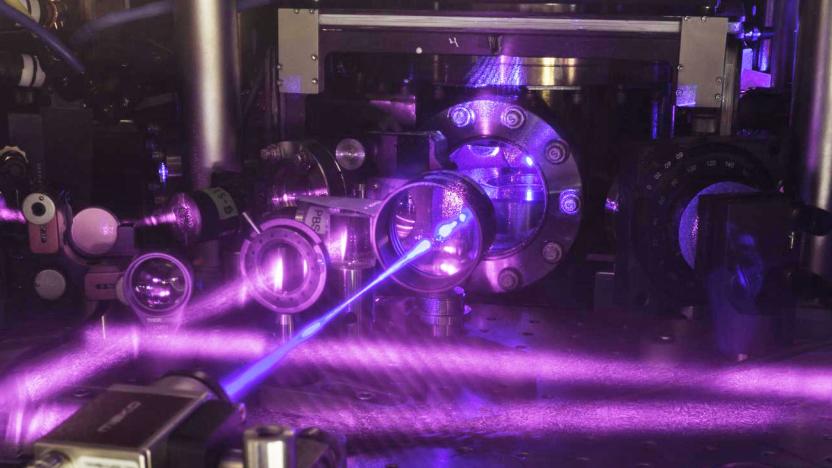
Researchers have increased atomic clock precision yet again
Researchers have pushed the precision and stability of atomic clocks to increasingly greater levels over the last few years. A big advancement was the introduction of optical lattices, lasers which essentially quarantine individual atoms and boost accuracy by keeping them from moving around and interacting with each other. Scientists at the National Institute of Standards and Technology (NIST) have used this method to develop clocks so stable, they can keep extremely precise time for thousands and even billions of years. The team's most precise clock was created in 2015, but research published this week in Science describes a new version that just took that top spot.

Nobel Prize for Physics awarded to gravitational wave scientists
The 2017 winners of the Nobel Prize for Physics were announced today. One half of the prize will go to Ranier Weiss from MIT, while the other half is being awarded jointly to Barry C. Barish and Kip S. Thorne, both from Caltech. The three scientists worked on gravitational wave observation, collaborating between the Laser Interferometer Gravitational-Wave Observatory (LIGO) and Virgo, its European counterpart. The prize was awarded "for decisive contributions to the LIGO detector and the observation of gravitational waves," according to the Nobel Prize website.

Scientists record a fourth set of gravitational waves
Last year, researchers confirmed the existence of gravitational waves with two Laser Interferometer Gravitational-wave Observatory (LIGO) detectors. Shortly thereafter, they detected two additional gravitational wave-causing events that sent ripples through the universe. Well, we can now add a fourth to that list, as astronomers announced another set of waves. And for the first time, they observed the waves with a third detector -- the Italy-based Virgo.

Canada's new radio telescope starts mapping the universe
On September 7th, an extraordinarily powerful radio telescope in Canada has begun listening to the sounds of the universe. The Canadian Hydrogen Intensity Mapping Experiment or CHIME will help scientists learn more about the history of the cosmos, radio bursts from pulsars and gravitational waves, the ripples in spacetime whose existence were finally confirmed by scientists in 2016.
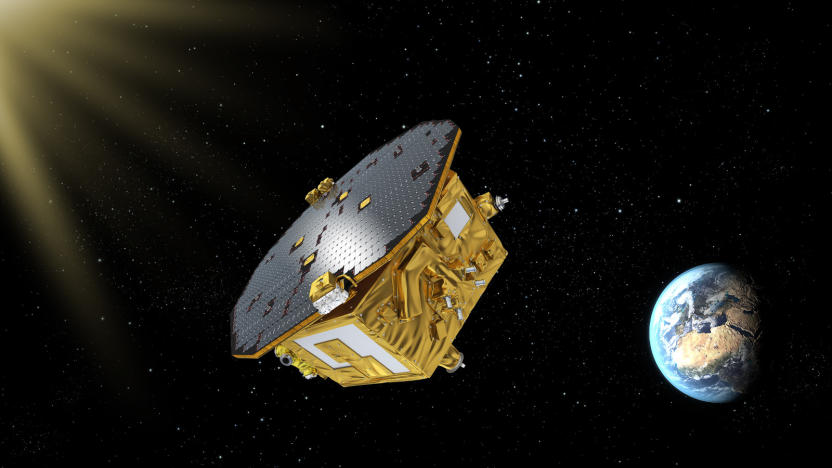
The ESA's hunt for gravitational waves is over, for now
On July 18th, 2017 at around 2PM Eastern time, Professor Stefano Vitale sent the LISA Pathfinder its final kill commands from the mission's control center in Germany. The lead investigator's instructions prompted the probe to reboot itself and run a corrupted version of its software. That ensures that the spacecraft will harmlessly orbit the sun without colliding into other probes. Before the ESA powered down Pathfinder, though, it was able to meet and even exceed all the agency's objectives.
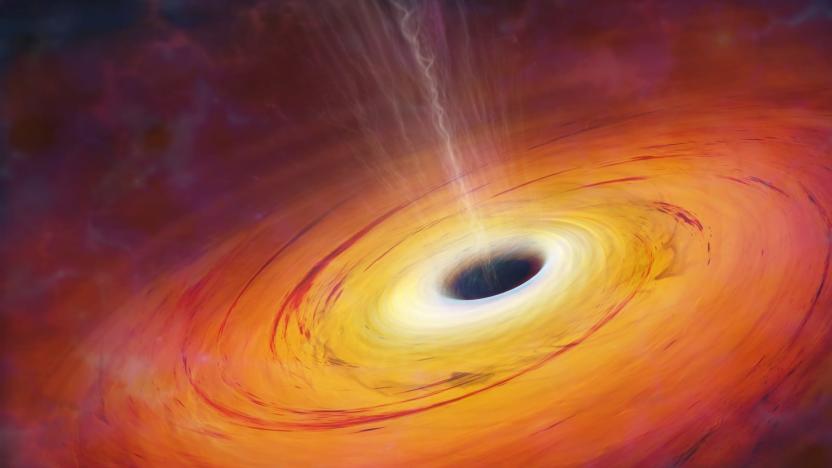
LIGO astronomers detect third black hole collision
Today, astronomers announced that LIGO has detected gravitational waves for the third time. As a result, scientists now may have new insights into how black holes are formed. Gravitational waves are ripples in the spacetime that travel at the speed of light. They're emitted as a result of black hole collisions, which produce incredible amounts of power. They had long been predicted by Albert Einstein's general theory of relativity, but it wasn't until September 2015 that LIGO's (the Laser Inferometer Gravitational-Wave Observatory) first direct observation occurred. A second detection quickly followed in December 2015. This third observation happened on January 4, 2017, and it's the furthest one yet, at 3 billion light years away. (The first two were around 1.3–1.4 billion light years away).

Hubble telescope spots 'runaway' black hole
Astronomers using NASA's Hubble Space Telescope have observed a supermassive black hole with a mass one million times that of our Sun hurtling away from its parent galaxy. It's the first confirmed case out of several suspected "runaway black holes," which required an immense amount of energy to get launched from the center of its galaxy. How much?

Caltech fires up LIGO to hunt for more gravitational waves
Nearly a year after LIGO, the Laser Interferometer Gravitational-wave Observatory, made physics history this past February, Caltech researchers have finally finished upgrading its capabilities and are ready to resume their hunt for gravitational waves. The system transitioned from experimental runs to regular operations on Wednesday morning, November 30th.
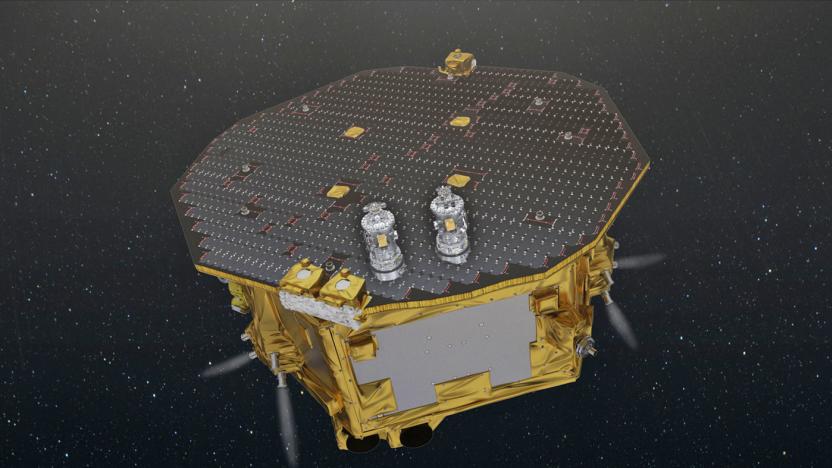
NASA plans to rejoin the ESA's gravitational waves project
NASA was supposed to be the European Space Agency's partner in the quest to measure gravitational waves, but it had to drop out in 2011 due to budgetary constraints. According to Science, though, NASA officials changed their minds after a team of scientists confirmed the existence of these distortions in the fabric of space-time. At the 11th symposium to discuss the status of ESA's Laser Interferometry Space Antenna (LISA) project, NASA said it wants to patch things up with its European counterpart and rejoin the mission as a major partner.

Computer simulations point to the source of gravitational waves
Since the first gravitational waves were successfully detected last September by the earthbound Laser Interferometer Gravitational-Wave Observatory (LIGO), scientists have wondered what made them. Today, researchers from the University of Warsaw published a theory suggesting that they were likely created by the collision of two black holes, which had been stars that formed 12 billion years ago.

The first gravitational wave discovery wasn't a fluke
If you were worried that the first confirmed detection of gravitational waves was just a one-off result... don't be. Researchers analyzing LIGO data have verified a second instance (recorded in December 2015) where two black holes merged and produced the hard-to-spot behavior. The circumstances are decidedly different this time around, though. Ars Technica observes that the black holes were much smaller than those in the first instance, and spent more time on their collision course. While that offered more data to collect, the reduced intensity also introduced more errors -- it was harder to determine the masses of these holes.
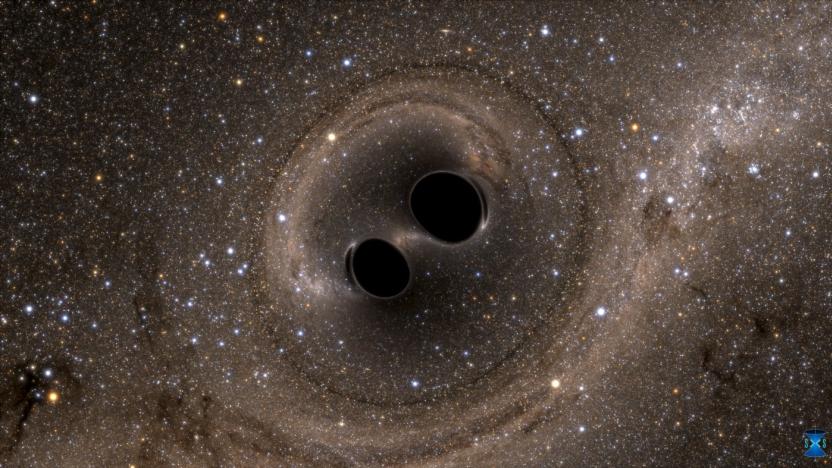
Dark matter might be made of black holes
So just what is dark matter made of? Astronomer Alexander Kashlinsky of the NASA Goddard Space Flight Center in Maryland thinks the mysterious cosmic stuff could be made of black holes that formed soon after the Big Bang.

ICYMI: Gravitational waves and holographic Holocaust memory
try{document.getElementById("aol-cms-player-1").style.display="none";}catch(e){}Today on In Case You Missed It: NASA's mission to figure out where black holes are located won't actually deploy until 2034, but the science behind the sound experiment is being worked on now. University of Southern California's Institute for Creative Technologies created a 3D video rig to capture people's memories, saving the video and sound mash-up for future generations to hear first-hand accounts of the Holocaust. The "In Good Company" shoe for turning off phone notifications automatically is here; in case you're interested in the human ancestor story, NPR has a good summary here. As always, please share any great tech or science videos you find by using the #ICYMI hashtag on Twitter for @mskerryd.
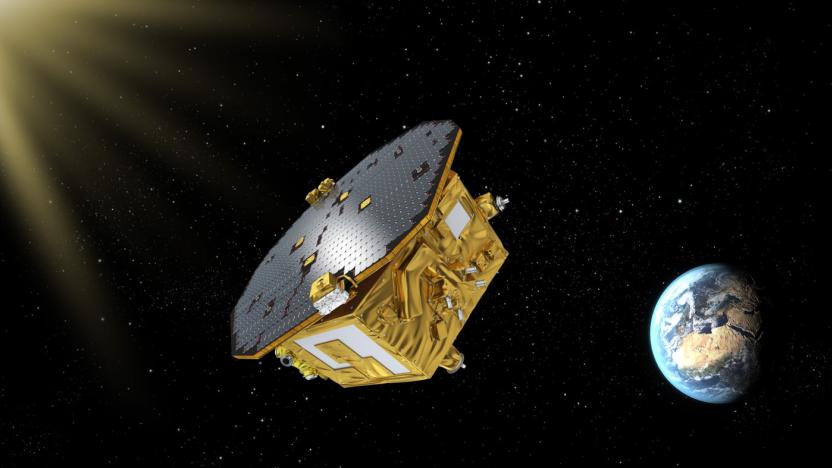
LISA Pathfinder 'listens' to the universe while in freefall
Back in December, the European Space Agency (ESA) launched the Laser Interferometer Space Antenna (LISA) Pathfinder spacecraft. Today, it's finally positioned itself in gravitational stasis at the first Langrangian Point (L1) that lets its instruments hang in freefall. This will hopefully filter out extraneous cosmic noise so the spacecraft can achieve its mission: measuring gravitational waves, the "sound" of the universe.

'Goopy' dark matter could offer a new vision of the early universe
Cosmologists exploring the origins of the universe have a new theory about how dark matter behaves. Although the stuff makes up 80 percent of the matter in the universe, we don't really have a good sense of what dark matter is actually made of. According to The New Scientist, however, UT Austin professor Paul Shapiro and graduate student Bouha Li believe dark matter could be made up of bosons that clump together in "a strange, goopy state of matter called Bose-Einstein condensate."
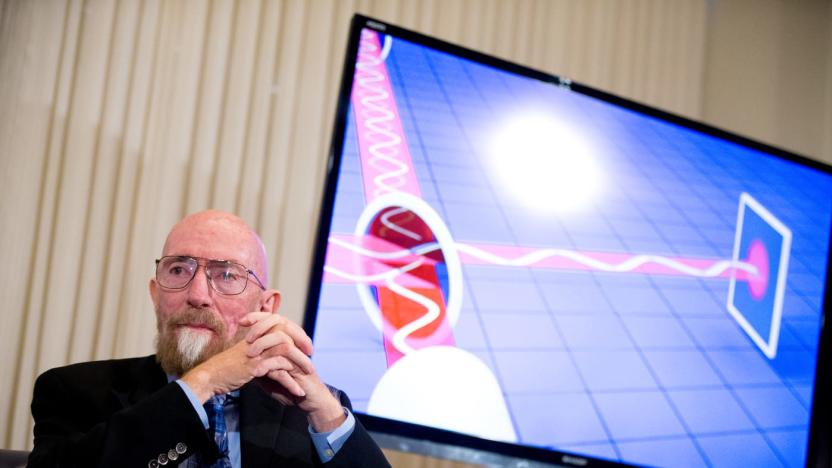
LIGO team wins $3 million prize for gravitational wave discovery
The team of scientists and engineers who confirmed the existence of gravitational waves earlier this year have just nabbed a handsome $3 million reward as part of a special Breakthrough Prize in Fundamental Physics.

Astronomers are using pulsars to spot gravitational waves
Earlier this month scientists detected gravitational waves, but it wasn't easy. Because of the tiny forces involved, it took us nearly 100 years to confirm Einstein's original prediction that ultra-massive objects like black holes could send ripples across space-time. A team of astronomers from a group called NANOGrav thinks it can use stable pulsar signals to track tiny movements in the Earth when it's jostled by gravitational waves. "Detecting this signal is possible if we are able to monitor a sufficiently large number of pulsars spread across the sky," says Stephen Taylor from NASA's Jet Propulsion Laboratory. "The smoking gun will be seeing the same pattern of deviations in all of them."








